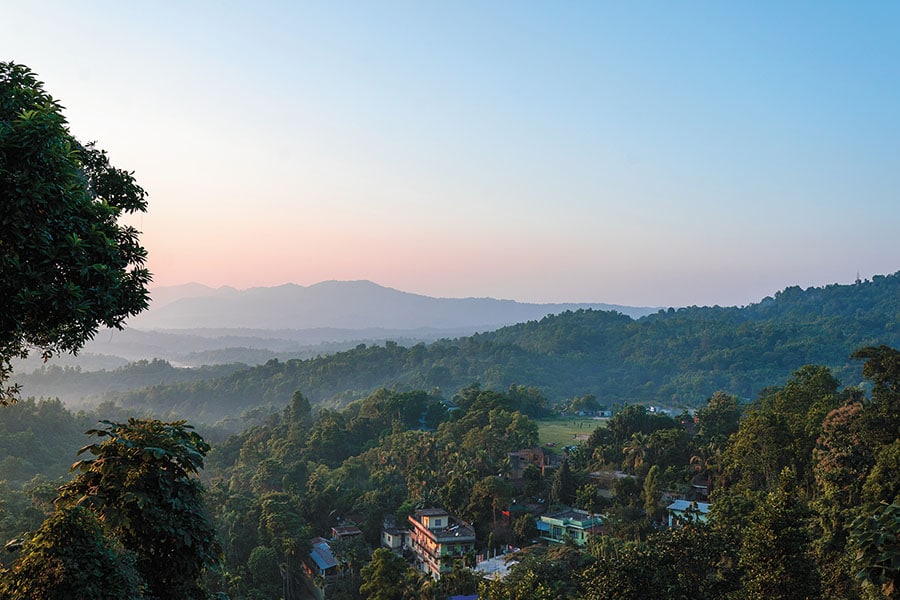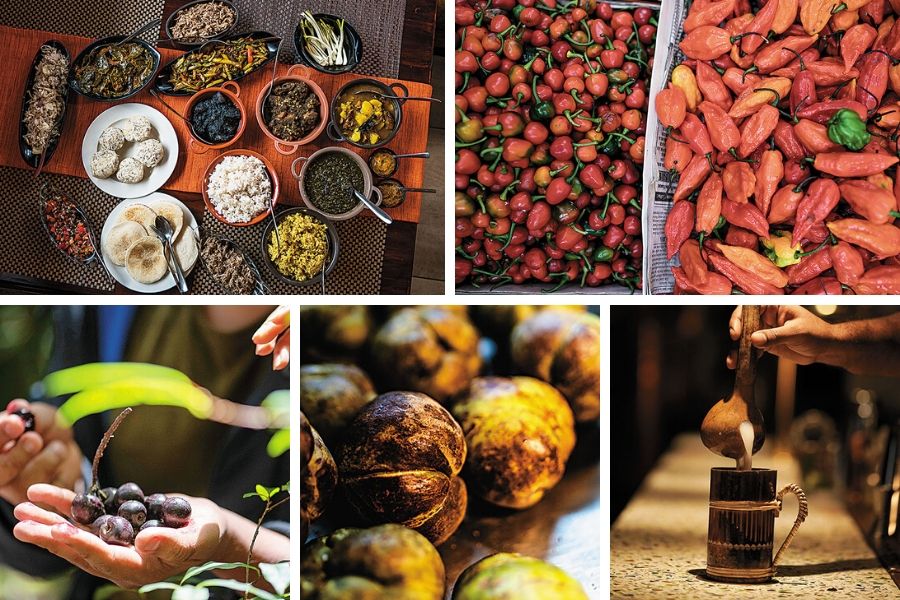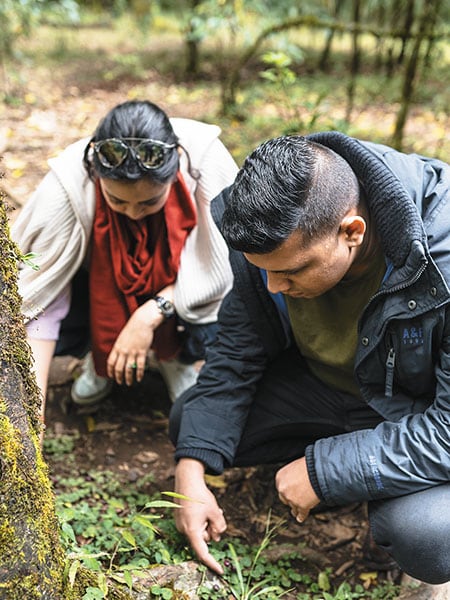
A Mumbai bar goes foraging to the North East
Thirsty City 127's chefs and bartenders travelled across Meghalaya and Assam, learning about age-old techniques and local ingredients to formulate a menu with dishes, cocktails, dessert and specialty beer
 Stunning view of the Guwahati valley
Stunning view of the Guwahati valleyPhoto courtesy: Uncommonsense Films
After close to five-and-a-half hours on the road from Guwahati, we reached a quaint little town of Tura, located in the south of Meghalaya. It was an uphill trek, but the breathtaking view on offer made the effort worth it. However, it was not the view that the team from Mumbai-based microbrewery and bar Thirsty City 127 was there for: It was to get a taste of a homemade wine called ‘judima’, made from a local variety of sticky rice.
We got the first taste of it in the home of a shy 65-year-old woman, who seemed to be taken aback by a bunch of visiting strangers. She served us the brew in handmade bamboo glasses, which come attached with a ladle made from a variety of bottle gourd that becomes hard when dried. The wine is white, with a strong smell and taste. While the brew is made from fermented rice, the yeast used to ferment the rice is locally made, from dry rice powder and dry chilli powder.
As soon as Santosh Kukreti, head bartender at Thirsty City, took the first sip, he knew he had to recreate the experience for his customers. And so he did, with Tropical Ferment being introduced on the menu last November, complete with the bamboo glass and ladle, which were brought to Mumbai by the cartload.
The interesting part about the wine was that even the yeast used to ferment the rice was homemade, using an age-old method. “Not only was our host in Tura kind enough to gift us some of the yeast, she even taught us how to make it. And to speed up the fermentation process, we added some pineapple peels,” says Kukreti. This is just one of the many stories from the foraging trip—which included travels through Meghalaya and Assam—that led to the creation of the Trail Menu for Thirsty City 127’s first anniversary, with six cocktails, one specialty beer, six dishes and two desserts.
Travelling through lesser known and remote areas of the country, or foreign lands, and bringing back recipes and flavours for restaurants is a concept that is becoming popular among chefs and restaurateurs. Mumbai-based restaurants such as Masque, Bombay Canteen and O Pedro are some of the entities that have included on their menus dishes inspired by ingredients and traditions from different cuisines. The experimentation extends to the drinks menu as well, with cocktails, beers, gin and ciders being made from local ingredients.
 Clockwise: Traditional khasi meal in Meghalaya; Bhut Jolokia chillies; Thirsty City's version of judima, a homemade wine from a local variety of sticky rice wine; Elephant apples; Sohiong berries
Clockwise: Traditional khasi meal in Meghalaya; Bhut Jolokia chillies; Thirsty City's version of judima, a homemade wine from a local variety of sticky rice wine; Elephant apples; Sohiong berries“The Northeast remains fairly unexplored... we had been hearing a lot about it and the flavour profile of the cuisine there,” says Aakriti Agarwal, CEO, Thirsty City 127. “So we decided to take on the challenge.” They returned with more than 35 ingredients—from the frightfully hot Bhut jolokia chilli and elephant apple to Sohiong berries and ash water (made from the ash of dried banana tree bark and used as a replacement for baking soda).

 Team members of Thirsty City 127 pick Sohiong berries at a village in Shillong
Team members of Thirsty City 127 pick Sohiong berries at a village in Shillong



